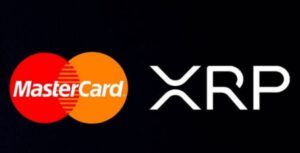Ripple–Mastercard Partnership Boosts XRP via Stablecoin Settlement
Ripple has launched a groundbreaking collaboration with Mastercard, Gemini, and WebBank. The partnership aims to revolutionize credit card transactions by settling them using RLUSD stablecoin on the XRP Ledger. This initiative marks a significant step toward integrating blockchain technology into mainstream financial infrastructure.
The pilot program positions WebBank as one of the first regulated U.S. banks to settle traditional card payments using a stablecoin on a public blockchain. The collaboration leverages Ripple’s RLUSD, a dollar-backed stablecoin launched in December 2024 under New York Department of Financial Services regulation. RLUSD has already surpassed $1 billion in circulation, demonstrating strong institutional adoption.
Mastercard’s Global Head of Digital Commercialization, Sherri Haymond, emphasized the strategic importance of this partnership. She highlighted how the collaboration brings regulated stablecoin payments into the financial mainstream through Mastercard’s global payment network. This development signals growing confidence in blockchain-based settlement systems among major financial institutions.
XRP Price Surges Following Partnership Announcement
The Mastercard partnership announcement contributed to a notable 12% gain in XRP price. The token bounced from support levels near $2.15 to trade around $2.30. This rebound reflects renewed investor confidence and marks a recovery from earlier November lows.
The price movement coincided with Ripple’s separate announcement of securing $500 million in funding at a $40 billion valuation. Financial heavyweights, including Citadel Securities and Fortress Investment Group, participated in the funding round. These developments have shifted market sentiment toward viewing XRP as a utility token rather than purely a speculative asset.
Analysts note that the partnership with Mastercard validates the XRP Ledger’s capability to handle institutional-scale transactions. The infrastructure alignment for faster inter-bank and cross-border transactions could increase demand for XRP as a bridge currency. This utility-focused narrative has attracted attention from long-term institutional investors.
XRP Ledger Network Activity Reaches Eight-Month High
On-chain data from Santiment reveals impressive growth in XRP network activity. Over 21,595 new XRP wallets were created within 48 hours of the partnership announcement. This represents the highest network growth since January 2025, signaling renewed interest in the XRP ecosystem.
The surge in wallet creation often precedes heightened price movements, according to historical patterns. This metric reflects both retail participation and potentially fresh developer interest in building on the XRP Ledger. The timing of this network expansion alongside the Mastercard announcement suggests a strong market response to institutional partnerships.
Network activity metrics complement the trading volume increases observed during the recent price rally. The combination of wallet growth and partnership news creates a foundation for sustained momentum. However, traders remain watchful of key resistance levels that could determine the next major price movement.
RLUSD Stablecoin Powers Traditional Payment Settlement
RLUSD serves as the core innovation enabling blockchain-based settlement for fiat transactions. WebBank will use RLUSD to settle payments on Mastercard’s network through the XRP Ledger. This approach reduces the time and cost associated with traditional multi-day fiat settlement processes.
Ripple President Monica Long explained that the goal is to bring blockchain speed and efficiency to payment flows that consumers already know. The consumer experience remains unchanged while back-end settlement becomes faster and more transparent. This seamless integration addresses a key challenge in blockchain adoption.
The regulatory approval of RLUSD by New York’s Department of Financial Services provides crucial legitimacy. The stablecoin is fully backed by cash and cash equivalents, with custody handled by BNY Mellon. These safeguards address institutional concerns about stability and regulatory compliance in digital asset settlements.
Regulatory Framework Guides Partnership Timeline
The pilot program remains pending regulatory approvals before full implementation. All partners have committed to advancing the initiative responsibly and in full compliance with applicable frameworks. The regulatory process will guide the timing of RLUSD onboarding to the XRP Ledger.
Ripple emphasized that regulatory approval is a key component of these efforts. Because the project involves both a regulated U.S. bank and stablecoin-based settlements, deployment requires proper authorization. This cautious approach reflects the importance of maintaining regulatory compliance while innovating.
The partners plan to begin onboarding RLUSD in the coming months, followed by integration into settlement processes. If successful, this effort could become a model for other card programs exploring blockchain-based settlement. The framework established here may influence how banks and payment networks approach digital asset integration.
Conclusion
The Ripple-Mastercard partnership represents a significant milestone in blockchain integration with traditional finance. The 12% XRP price gain and an eight-month high in wallet creation demonstrate a strong market response. As regulatory approvals progress, this collaboration could reshape how financial institutions approach stablecoin settlement systems.

